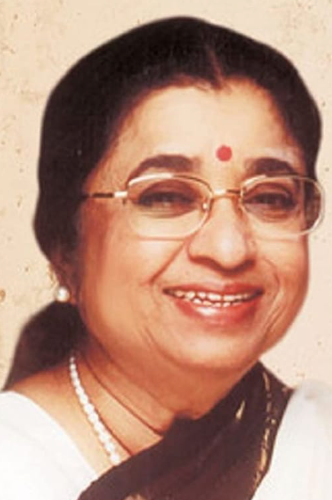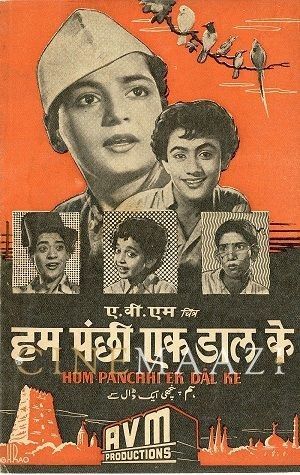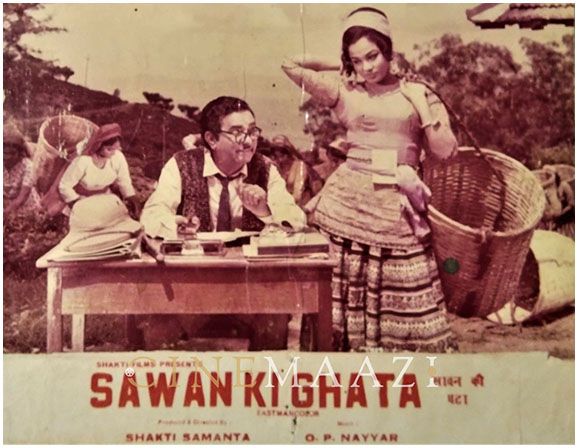We are all aware that the motion picture film is playing a very definite role in our present day living and thinking as a medium of entertainment.
Everywhere there is that same urge, the same lure, the same fascination, drawing masses of people, old and young, from all walks of life, to the motion picture theatres. People come for relaxation and entertainment, drawn by the drama, the tragedy, the comedy, the adventure of life as mirrored on the screens of the world. In the quiet of the motion picture theatre, there is a peculiar affinity between the audience, relaxed and receptive, and the screen which projects emotional impacts by judicious use of image and sound, leaving an indelible impression on the conscious and subconscious minds of the audience.
Impact of Films
With children this emotional impact is greater and more lasting because their young, seeking minds are wide open to early impressions and influences. The potentiality of the screen in moulding a child’s personality cannot be over-emphasized and in the carefully planned production-programme of special films for children there is a challenge to be met.
There are nearly a hundred million children in India today between the ages of four to fourteen. They will one day take their rightful place in the social structure of the nation. They will be followed by other generations who in turn will write newer chapters in the saga of Indian life, Indian thought and Indian achievement.
In long-range thinking and planning, it is human values that will count most in the shaping of sound social concepts towards a happy and progressive future.
We know that such concepts and behaviour patterns are not easily acquired by individuals once they are accustomed to set ways of living and thinking; but ennobling influences can be planted in the minds of the young during the impressionable years. This is why we must look upon the hundred million children of india as our greatest treasure, our greatest hope in the shape of things to come, for they are the vital link between our present and our future-a fact which means that moral and spiritual values will leave their imprint on our future society.
How much of a contribution the children of today can make to the India of tomorrow will depend, therefore, on how much time and effort we can devote to them now in nourishing their young, eager, and growing minds with healthy influences.
While, no doubt, planned education on a mass scale will play a distinctive part, as also the influence of parents in bringing up their young, the medium of mass communication will always play a dominant part in shaping the minds and thoughts of our children in their formative years. In this, children’s films can play a very useful role.

Types of Children’s Films
What exactly is a children’s film ? How is it designed and where and how can it be shown ?
Films for children can be classified, for instance, into the educational film, the class-room and teaching film, the biographical film, the historical film, the entertainment film and the documentary film, each designed for children of particular age-groups. Each of these types has a definite part to play in its own sphere. It is incorrectly believed that children’s films are merely instructional and educational in character. In fact, the name ‘children’s films’ is often confused with the class-room or teaching film having an aim and character all its own.
Actually, most popular type of film for children is the entertainment film, in which the accent is wholly on clean and healthy entertainment so that children can identify themselves with healthy ideals woven into the texture of the story. There can be stories based on themes such as bravery, honesty, adventure, gallantry, love for parents, kindness to human beings and animals, good fellowship and fair-play, tolerance and justice, etc. there are also fairy tales, legends, folklores in which the medium of cartoon and animated puppetry can be usefully employed. In the exposition of all such stories, as mentioned earlier, the accent is on entertainment. If there is a purposeful and elevating theme, it is never obvious-rather, in the film interpretation of such stories, there is an unconscious assimilation of healthy values by children through the medium of entertainment. In the telling of stories, too, the approach should be simple. Direct, and above all, realistic. Children are prone to be bored by sophisticated dialogue and complicated intrigues. In fact, they prefer action pantomime to dialogue. They also want to see things more closely and observe reactions and expressions on the faces of the players. They also want to identify themselves with the young ‘hero’ or ‘heroine’ of the story and emotionally participate in their triumph over difficulties and dangers, the triumph of good over evil, the achievement of a mission, etc. There is no doubt that such entertainment films leave an indelible impression on the child’s mind and influence his character and personality.
Extra-curricular activities play an important part in the education and development of the child’s personality, and films constitute one such important activity. So far as Indian children are concerned, there is a great opportunity for us to use films effectively in an organized and systematic manner.
Different Age-Groups
While children’s entertainment films can all be seen and enjoyed by children of different age-group and, incidentally, by grown-ups too in whom the heart of a child is ever present, there is also, on the basis of research conducted in child psychology, a more specific grouping of such subjects into three main group : films recommended for children between five and seven, between ten and twelve, and thirteen and sixteen (the ‘teenagers’).
Careful consideration is given to the choice of subjects, and parti cular attention is paid to the writing of the scree-treatment of films designed for children in these age-group in keeping with their capacity for assimilation and enjoyment of the films. Broadly speaking, it can be said that subjects for children between five and seven years of age should be tender in spirit and treated with simplicity, innocence and charm. The subjects may be legends or fairy tales, preferably in colour ; whenever possible, picturized through cartoon or animated puppetry.
From ten to twelve are the most impressionable years for children the midway stage between childhood and adolescence. In this age group there should be recourse to subject with ennobling themes of character and emotional build-up of fun and play, love for animals and affection for people, of the triumph of truth and justice, of heroism and honour, of faith and courage and of moral and spiritual values.
Between thirteen and sixteen, children are nearing a new life. Their senses are attuned to the wonder of life before them. They are on the road to the great adventure ; their aspirations and ambitions are at the keenest pitch. For this group, action-adventure stories will be most popular-stories of daring and bravery, of patriotism, of emotional integration, of sports and competition in games and of determination and conquest of difficulties and hardships.
Length of Films
The question of the length of films, too, is important when using stories for children in the respective age-groups. Owing to the very nature of their minds, the capacity of children to imbibe this much and not more at one sitting should also be taken into account when planning children‘s films A single entertainment film for children of the featurette type should generally not exceed a run of one hour. Only in specific cases where the story warrants it, should this period be exceeded by ten to fifteen minutes at the most ; and this goes for children in the higher age-groups. In fact, the popular length for children’s films should be 3,000 to 4,000 feet or so, I,e., 30 to 45 minutes for a film. The production of one or two reelers is also important as these shorter films can have variety in output ; owing to brevity, they will not tax the minds of children, specially those of the younger age-groups. For a mixed audience of children of all age-groups, a varied programme consisting of a featurette 5,000 feet long, supple mented by other shorter films, can be shown to advantage. The full programme in such a case can be timed to one hour and forty-five minutes, thus sustaining the interest of the audience by the very nature of its variety.
It is a heartening experience to witness the exultation of children during a special programme of ‘children’s films’, specially when they give vent to their feelings by laughing, cheering or clapping during particular sequences in such films ; but there is ‘heart-warming entertainment’ just the same in a film where children may not laugh, cheer, or clap even once during the show. In fact, children may view a picture in pin-drop silence, or even weep or sob during certain stirring sequences of the film, yet derive a strong emotional satisfaction. Actually, it is the stirring of the emotions of child audiences that is important and significant in the making of children’s entertainment films, whether it be laughing, cheering, sobbing, clapping or enraptured silence.
The production and presentation of entertainment films for children differ, widely in approach and treatment, from those of the pure commercial entertainment films designed for adult audiences. Deep insight and understanding of children’s mind and an abiding love for them make the production of entertainment films for children a joyous and fascinating adventure into the magic world of children where tender charm, innocent beauty and poetry of spirit are constant companions to dedicated zeal.
The Children’s Film Society
.jpg/Children's%20Films%20(1)__326x480.jpg)
During 1963 and the first half of 1964, the Society completed four feature films each 6,000 feet long, and five shorter length subjects ranging from 2,000 to 4,000 feet, each subject different in theme and content and meant for the different age-groups. One animated cartoon film and one animated puppet film in colour are already in the process of completion. Five feature films and a number of animated cartoons have been included in the programme for the next year.
Perhaps even more important than their production is the exhibition of children’s entertainment films to child audiences all over the country. In some Western countries where the child film movement is highly specialized, attempted commercial shows of children’s films in regular commercial cinema-houses at standard rates have never been successful from the point of view of box-office returns and this applies to india. No doubt, there are a few second-run cinema houses in the country where special shows of children’s films to mixed audiences are even now attempted, but the percentage of return is indeed infinitesimal. Besides such shows do not fully serve the purpose for which children’s films are intended : for such films by their limited lengths are designed and produced for being shown to child audiences only, and to inculcate in children, through the medium of entertainment, healthy ideals and inspirations.
This article is an archival reproduction








.jpg)


